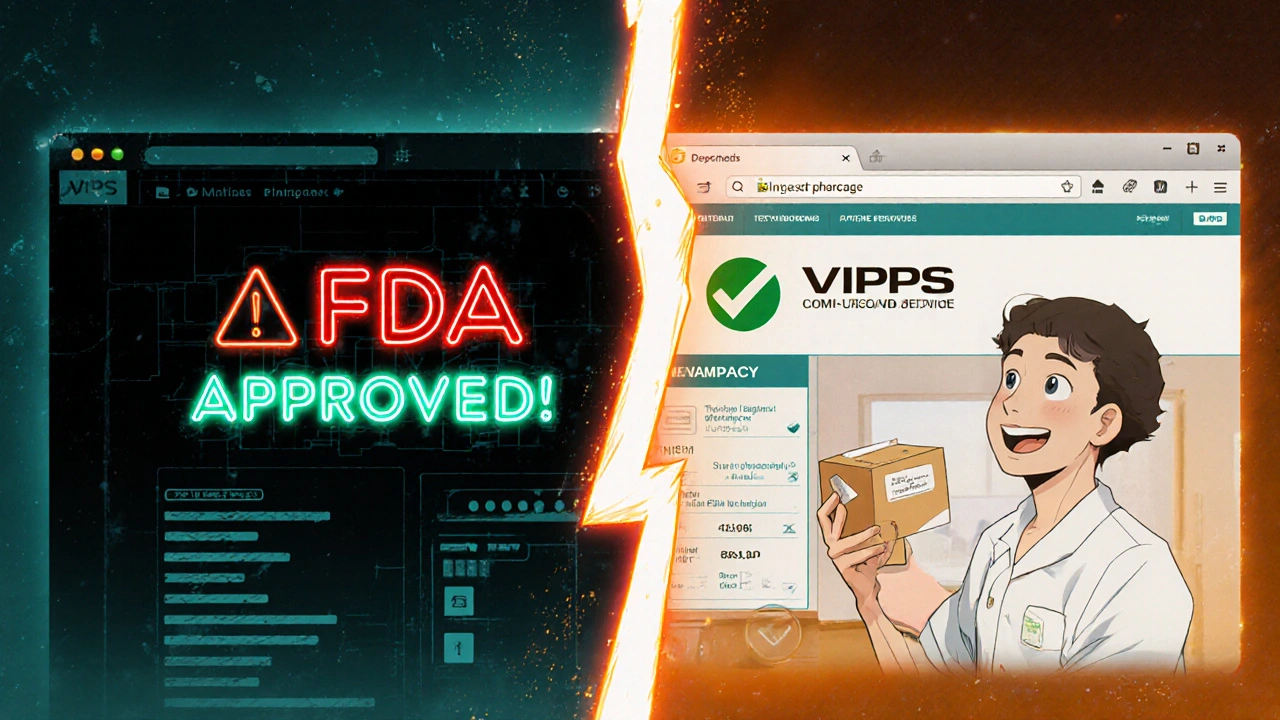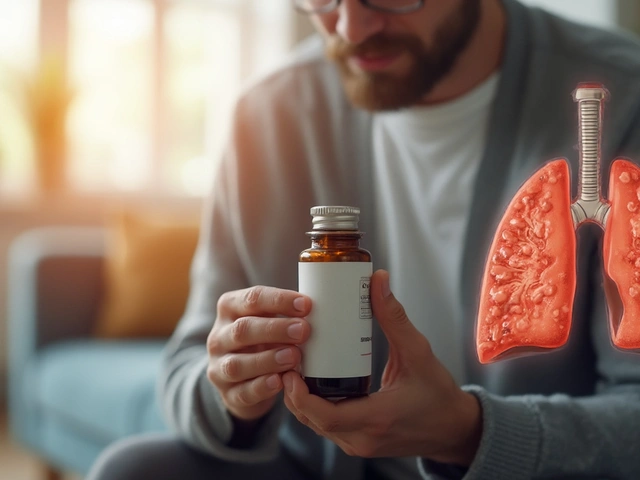Buying prescription medications from overseas used to be simple. A quick search, a few clicks, and your pills would arrive in the mail-often cheaper than your local pharmacy. But as of August 29, 2025, that’s no longer true. The U.S. has ended the $800 duty-free threshold for all international packages. If you’re ordering medication from abroad, you’re now dealing with a system that’s stricter, more complex, and far more expensive. And if you don’t follow the rules, your package won’t just be delayed-it could be seized, fined, or even lead to legal trouble.
Why the Rules Changed in 2025
The old system let you import almost anything under $800 without paying taxes or duties. That’s how you could buy insulin from Canada for $30 instead of $300 in the U.S. But the government says that loophole was abused. Millions of packages slipped through without proper inspection. Some contained fake or unapproved drugs. Others were just cheap knockoffs with no quality control. Starting August 29, 2025, every commercial package entering the U.S. must pay duties-no exceptions, unless it’s a personal gift under $100.This change hit the postal system hard. Deutsche Post, Canada Post, and other major carriers stopped accepting business parcels to the U.S. after August 22, 2025. That means if you’re trying to order from a small foreign pharmacy using regular mail, your package likely won’t even leave the country. The only carriers still handling these shipments are express services like DHL, FedEx, and UPS-and they charge more because they handle customs paperwork for you.
What You Can and Can’t Ship
Not all medications are treated the same. The FDA allows personal imports of prescription drugs under very specific conditions:- The drug must be for a serious condition with no approved U.S. alternative
- You must have a valid prescription from a licensed U.S. doctor
- Only a 90-day supply can be imported at a time
- The drug must be legally sold in the country of origin
- You cannot be importing in bulk to resell
That means you can’t order ADHD meds, weight-loss drugs, or antibiotics from overseas just because they’re cheaper. Those are tightly controlled in the U.S. and require strict approval. But for chronic conditions like diabetes, hypertension, or arthritis-where generic versions are widely available overseas-you may still qualify.
Also, don’t assume that because a website says it’s “FDA-approved” or “licensed,” it’s legitimate. Many foreign pharmacies are scams. Look for sites with VIPPS certification (Verified Internet Pharmacy Practice Sites) or those listed on the National Association of Boards of Pharmacy’s safe pharmacy directory. If the site doesn’t ask for your prescription, walk away.
The New Duty System: Method 1 vs. Method 2
Now, every package must pay customs duty. But there are two ways it’s calculated-and you need to know which one applies.Method 1 (Ad Valorem): This is the standard method. Duty is based on the declared value of the item, using the Harmonized System (HS) code. For most medications, the rate is between 0% and 5%. But here’s the catch: you must get the HS code right. If you mislabel your insulin as a “dietary supplement,” the duty could jump to 300% higher than it should be.
Method 2 (Flat Rate): This is a temporary option that ends February 28, 2026. It charges fixed fees based on the country’s tariff rate: $80 for low-tariff countries, $160 for medium, $200 for high. This sounds bad-but if your medication costs $120 and you’re shipping from a country with a 16%+ tariff rate, Method 2 would cost you $160 in duties. That’s more than the item itself. So Method 1 is almost always better if you know the right HS code.
Here’s what you need to know: Method 1 is your best bet. But you can’t just guess the HS code. Use the U.S. International Trade Commission’s online tariff database. For insulin, the correct code is 3001.10.0000. For metformin, it’s 2941.90.5000. Mess this up, and you’re risking a penalty.

Documents You Must Get Right
No more “gift” labels. No more vague descriptions like “health supplement.” CBP now requires full documentation:- Commercial Invoice: Must list exact drug name, strength, quantity, manufacturer, and value. No abbreviations.
- Prescription Copy: A scanned copy from your U.S. doctor, signed and dated.
- Packing List: Matches the invoice exactly-no missing items.
- HS Code: Six-digit code printed on the invoice. Required since September 1, 2025.
If you’re shipping from a country with a trade agreement (like Canada or Mexico), you may also need a Certificate of Origin. Some countries require this automatically. Others don’t. But if you don’t include it and CBP asks, your package gets held.
For shipments over $2,500 per item, you’ll need to file an AES form with a Letter of Authorization. That’s rare for personal medication orders-but if you’re buying a year’s supply, you might hit that threshold. Don’t ignore it. Penalties start at $10,000 per violation.
Who Pays the Duty? (And How)
This is where most people get confused. Is it the sender? The recipient? The carrier?Under the new rules, the recipient (you) is legally responsible for paying any duties and taxes. But carriers can collect it upfront. That’s why DHL and FedEx ask for payment before delivery. If you refuse to pay, the package is returned or destroyed.
Some foreign pharmacies now offer DDP (Delivered Duty Paid) shipping. That means they pay the duty for you and include it in the price. It’s more expensive upfront-but you avoid surprises. If you’re ordering from a small pharmacy that doesn’t offer this, assume you’ll pay extra at the door.
And here’s the kicker: if the duty isn’t paid, CBP can hold your package for 30 days. After that, it’s auctioned off or destroyed. No refund. No second chance.
Alternatives to International Mail-Order
If the cost and hassle of international shipping aren’t worth it anymore, here’s what you can do instead:- Use U.S. mail-order pharmacies: Companies like CVS, Walgreens, and GoodRx offer 90-day supplies of generics for as low as $10-$20 per month.
- Check Canadian pharmacy partnerships: Some U.S. insurers now partner with Canadian pharmacies. You order through your insurer’s portal, and they handle the import legally.
- Apply for patient assistance programs: Drug manufacturers like Pfizer, Novo Nordisk, and Eli Lilly offer free or low-cost meds to qualifying U.S. patients.
- Use international fulfillment hubs: Some companies now warehouse medications in Mexico or Canada and ship them as domestic orders. That avoids U.S. customs entirely.
These options aren’t perfect-but they’re safer, legal, and often cheaper than trying to navigate the new customs system yourself.

Red Flags: When to Walk Away
Here are signs you’re dealing with a risky or illegal operation:- The site doesn’t ask for a prescription
- They ship from a country known for counterfeit drugs (e.g., India, Pakistan, Bangladesh-without proper certification)
- Prices are too good to be true (e.g., $5 for brand-name insulin)
- The website looks unprofessional, has broken links, or uses free email domains (Gmail, Yahoo)
- They say “no prescription needed” or “FDA approved” without proof
If you’ve been scammed before, you know how hard it is to get your money back. Don’t risk your health-and your wallet-on a website that won’t give you a physical address or customer service phone number.
Final Checklist Before You Click “Buy”
Before you send money overseas:- Confirm your medication is allowed for personal import under FDA rules
- Get a valid U.S. prescription
- Verify the pharmacy is legitimate (VIPPS or NABP certified)
- Ask if they offer DDP shipping
- Confirm they’ll include the correct HS code and commercial invoice
- Make sure the total value (meds + shipping) doesn’t exceed $2,500 per item
- Know you’ll pay duties-budget for it
If you skip even one step, you’re gambling with your health and your money. The rules aren’t going back. The system is now built to protect consumers-and punish those who cut corners.
Frequently Asked Questions
Can I still order insulin from Canada?
Yes, but only if you follow the rules. You need a U.S. prescription, a 90-day supply or less, and the pharmacy must be legitimate. You’ll pay customs duty (likely 0-5% of the value), and the package must include a commercial invoice with the correct HS code (3001.10.0000). DHL or FedEx are your best shipping options now-regular mail won’t work.
What happens if I don’t pay the customs duty?
Your package will be held for 30 days. After that, it’s either auctioned off or destroyed. You won’t get a refund. If you repeatedly ignore duties, CBP may flag your name, making future imports harder-even for personal items.
Are there any countries I should avoid for medication orders?
Avoid pharmacies based in countries with poor drug regulation unless they’re certified. India, Pakistan, Bangladesh, and parts of Southeast Asia have high rates of counterfeit drugs. Stick to Canada, the UK, Australia, or EU countries with strict pharmaceutical oversight. Even then, verify the pharmacy’s credentials.
Can I order over-the-counter meds like vitamins from overseas?
Yes, but they’re still subject to the new duty rules. If it’s a commercial shipment (not a personal gift under $100), you’ll pay duty. The HS code for most vitamins is 2106.90.9998. Duty is usually 0-3%. But if you’re buying in bulk (more than a 90-day supply), CBP may treat it as a commercial import and require additional documentation.
Is it legal to use a U.S. address to receive meds from abroad?
Yes, as long as you’re the end user and not reselling. Using your own address doesn’t make it legal or illegal-it’s what’s in the package and how it’s declared that matters. The key is having a prescription, staying under the 90-day limit, and paying the required duty. CBP doesn’t care where the package is sent-it cares whether you followed the rules.







Pramod Kumar
22 November, 2025 12:25 PMMan, this hits different when you're from India and see how insulin costs 10x less here than in the US. I’ve sent meds to family in Chicago before-used a VIPPS-certified Canadian pharmacy with DDP shipping. No drama, no surprise fees. Just a quiet miracle when your diabetic uncle gets his insulin for $25 instead of $300. The system’s broken, but it’s not impossible. You just gotta play it smart.
And yeah, those ‘$5 insulin’ sites? Red flag city. One cousin ordered from a site that looked like a 2005 Geocities page. Got a box of chalk dust and a PDF that said ‘FDA approved’ in Comic Sans. Never again.
Brandy Walley
24 November, 2025 03:42 AMwhy is everyone acting like this is a crisis lmao its just taxes you think the gov cares if you get your meds cheap no they care about revenue and control stop being dramatic its not a human rights issue its a spreadsheet
Linda Rosie
25 November, 2025 07:29 AMClear, practical, and necessary. The HS code detail alone saves people from costly mistakes. Thank you for outlining the exact documentation needed. This is exactly the kind of guidance that prevents real harm.
Vivian C Martinez
25 November, 2025 15:36 PMIf you’re considering international ordering, please do the research. It’s not worth risking your health or your finances on a gamble. The alternatives like GoodRx and patient assistance programs exist for a reason-they’re safe, legal, and often cheaper than you think. You’re not alone in this. Help is out there.
Ross Ruprecht
26 November, 2025 15:33 PMso like… i just pay the duty? thats it? no one’s gonna come knock on my door? i thought this was gonna be like a drug bust or something
Bryson Carroll
28 November, 2025 07:45 AMEveryone’s acting like this is some grand conspiracy but the truth is you’re just trying to bypass the system because you’re too lazy to get a real prescription or negotiate with your insurer. You think the FDA is out to get you? No. You’re the reason they had to shut the loophole. You’re the reason your neighbor got counterfeit metformin and ended up in the ER. Wake up
Jennifer Shannon
29 November, 2025 19:30 PMIt’s fascinating, really, how a policy meant to protect public health ends up reinforcing economic inequality-because the people who can afford DHL and legal paperwork are the same ones who can afford to pay the duty, while the rest are left to choose between starvation and smuggling. And yet, we call this ‘fair trade.’
I remember when I was in grad school in Montreal, my roommate’s mother in Mexico paid $12 for her blood pressure meds. Here? $400. The system isn’t broken-it was designed this way. And now, with the $800 threshold gone, we’ve just made it more elegant. More bureaucratic. More cruel.
But hey, at least the customs forms are beautifully formatted now.
Suzan Wanjiru
1 December, 2025 07:33 AMHS code for metformin is 2941.90.5000 confirmed. I used it last month for a 90-day supply from a UK pharmacy. DHL charged me $7.50 duty. Invoice had my name, script copy, and exact dosage. No issues. Don’t overcomplicate it. Just follow the checklist.
Also avoid anything from India unless it’s NABP certified. Saw a guy on Reddit get counterfeit pills. Ended up in the ER. Not worth it.
Kezia Katherine Lewis
3 December, 2025 00:24 AMThe structural implications of this policy shift are non-trivial. By eliminating the de minimis threshold for pharmaceuticals, the CBP has effectively reclassified personal importation as a commercial activity, thereby triggering compliance obligations under the Trade Act of 1974 and the Federal Food, Drug, and Cosmetic Act. The result is a regulatory friction that disproportionately impacts low-income patients with chronic conditions-particularly those reliant on generics with no U.S. equivalent.
Further, the reliance on express carriers creates a logistical bottleneck that undermines the very principle of patient autonomy. This is not merely a customs adjustment-it’s a systemic exclusionary mechanism disguised as consumer protection.
Henrik Stacke
3 December, 2025 22:39 PMOh, this is just beautiful. Absolute poetry in bureaucratic form. The UK used to be the place you’d go for cheap meds-now? Even our pharmacies won’t ship to the States unless you’ve got a lawyer and a notarized letter from your GP. I sent my mum’s thyroid pills from London last month. DHL charged me £140 in ‘handling fees’-more than the meds cost.
And yet, we’re told this is ‘for your safety.’ I’d rather take my chances with a well-reviewed pharmacy than pay a $200 flat rate just to get my blood pressure pills. It’s not regulation-it’s extortion dressed in a suit.
Manjistha Roy
5 December, 2025 21:27 PMThis post is incredibly helpful, and I'm so glad someone took the time to lay out the HS codes and documentation clearly. Many people don't realize how easily a package can be seized over a missing comma in the invoice or an incorrect dosage listing. I've helped three friends in the U.S. navigate this process from India, and every single time, the key was triple-checking the commercial invoice and using only certified pharmacies. No shortcuts. No exceptions. One typo, and your entire month's supply vanishes.
Also, never trust a website that says 'no prescription needed'-even if it looks professional. The scammers are getting better. Very, very better.
Jennifer Skolney
6 December, 2025 08:42 AMJust wanted to say thank you for this. I’ve been ordering my insulin from Canada for 3 years and was terrified this change would ruin it. Followed your checklist to the letter-used DDP, got the HS code right, sent the prescription copy. Package arrived in 5 days with no extra fees. 🙏
And to everyone panicking: you’re not alone. There are safe ways. You just gotta do the work. You got this 💪